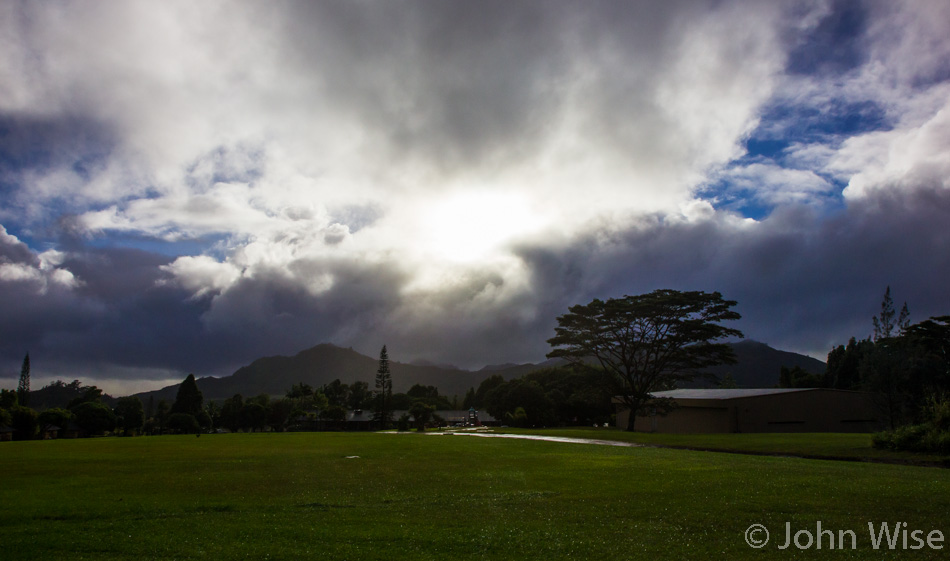
It rained overnight, over and over again, using the tin roof as a musical instrument that sang to us. The lyrics told of how the other drops that were falling to earth were feeding the plants and nourishing the land in order to keep Kauai happy. The light breeze gently blew through the open windows, and we slept like we were at home; we were cozy here. The full night of sleep lasted until the first light of morning stirred us awake.
Every few minutes, it rains and then slows to a stop, only to pick up again a few minutes later. The stream of clouds, while denying us a proper sunrise, works hard to make up for it by offering a dramatic show of cumulus clouds. We bask under the sky with our tropically enhanced breakfast of oatmeal and fresh starfruit, enjoyed with hot coffee outside on the front porch, pinching ourselves that this is our life today. Watching the world, we are one with our laziness. Chickens have come out to start their day pecking at the wet earth, looking for their own version of tropical breakfast. We indulge sky and fowl by being witness to their existence.
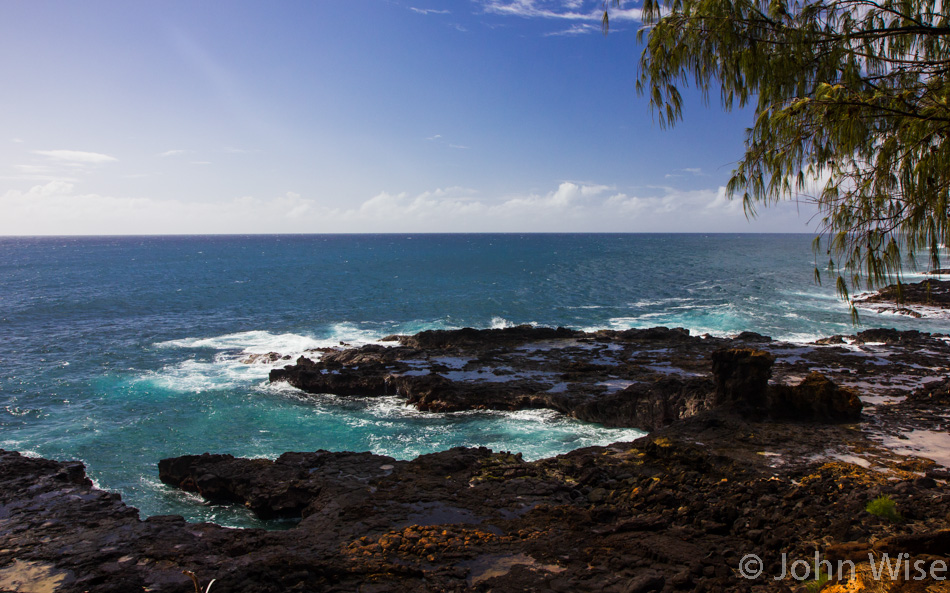
It’s nearly 11:00 before we leave the really slow life to join the normal slow life that exists beyond our encampment under Kahili Mountain. And just what was it that motivated us to put down the pen and the drop spindle? Poke bento from the Koloa Fish Market, of course. From the mud road over to the tree tunnel down to the small village by the sea, we collect our early lunch and look for the perfect spot to sit down and enjoy it. That spot is on the way to a spouting horn on the other side of Poipu. There’s a short wall here that becomes a picnic table where we dig into this mixture of ahi, seaweed, sesame, sea salt, wasabi cream, and rice. Another band of rain pushes us back to the car, and we are once again on the move.

On the way to the spouting horn, we passed a botanical garden and made a note that we thought we’d like to return and visit its grounds. The spout is busy as the ocean pumps water into a tube that feeds this hydraulic show. I’m comfortable sitting here watching the ocean while Caroline walks over to visit the vendors that have set up shop at the end of this road. The impromptu “mall” is reminiscent of the gift and jewelry stands we find being run by Navajos in Arizona and New Mexico
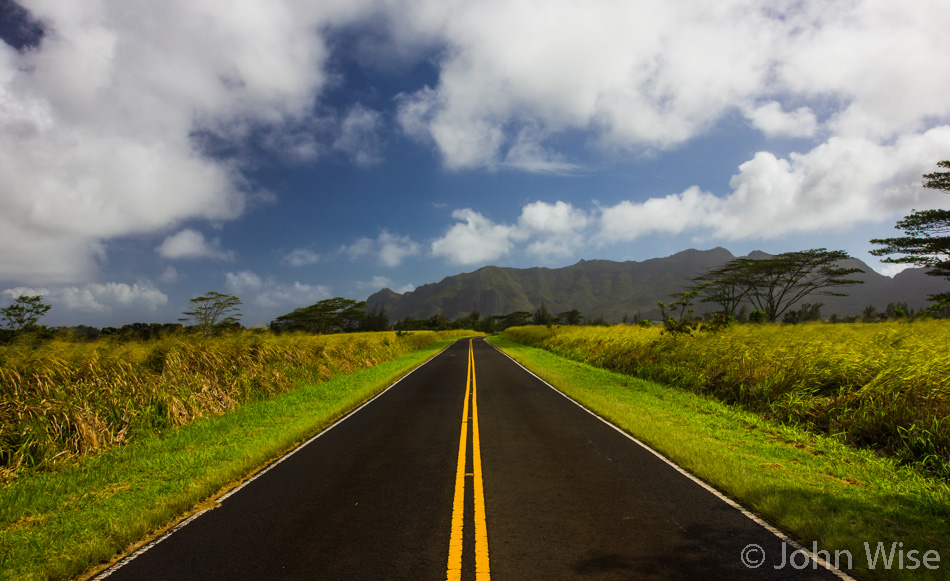
With no plan for what to do with the day, we stick to that plan and will simply go where our impulse takes us. After leaving the Poipu / Koloa area we head for the main road and spot a sign pointing us to the Old Road to Lihue – sounds perfect. The drive is exceptional in its beauty. If you were to think that I say this about all the roads in Hawaii, you’d probably be right. Our road travels through a broad green valley with lush mountains ahead and golden grasses lining the asphalt. There are not enough superlatives to exclaim our awe and good fortune that we caught the sign that has pulled us into this seductive landscape. While we creep ahead on this car-less road at five mph, we’d prefer to be walking it.
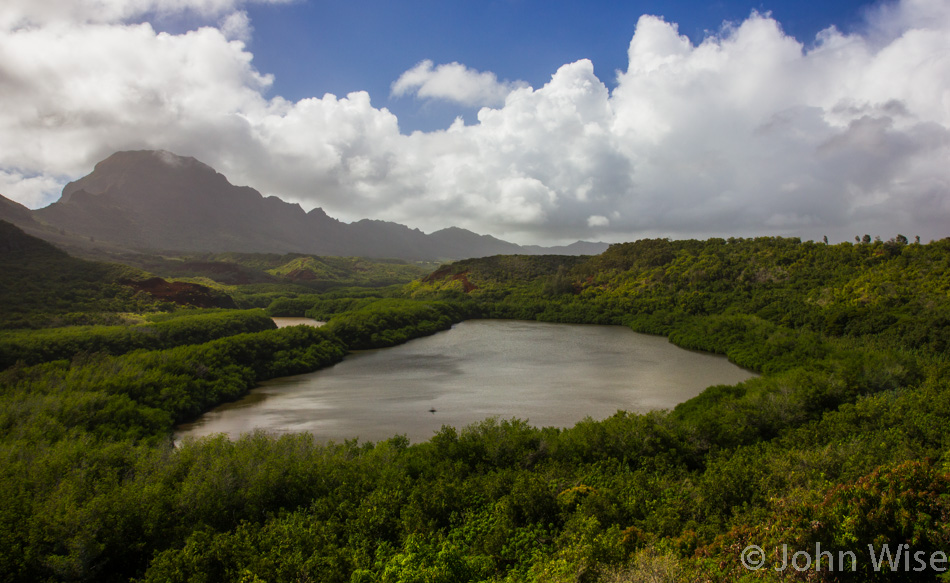
Following a curve in the road, we turn the corner to eye an even bigger surprise: the Menehune Fishponds or, more appropriately, the Alekoko Fishpond. Legend has it that this 1000-year-old lake was built by the Menehune “little people” in a night. No matter the source, this is a great example of early aquaculture that has survived for ten centuries.
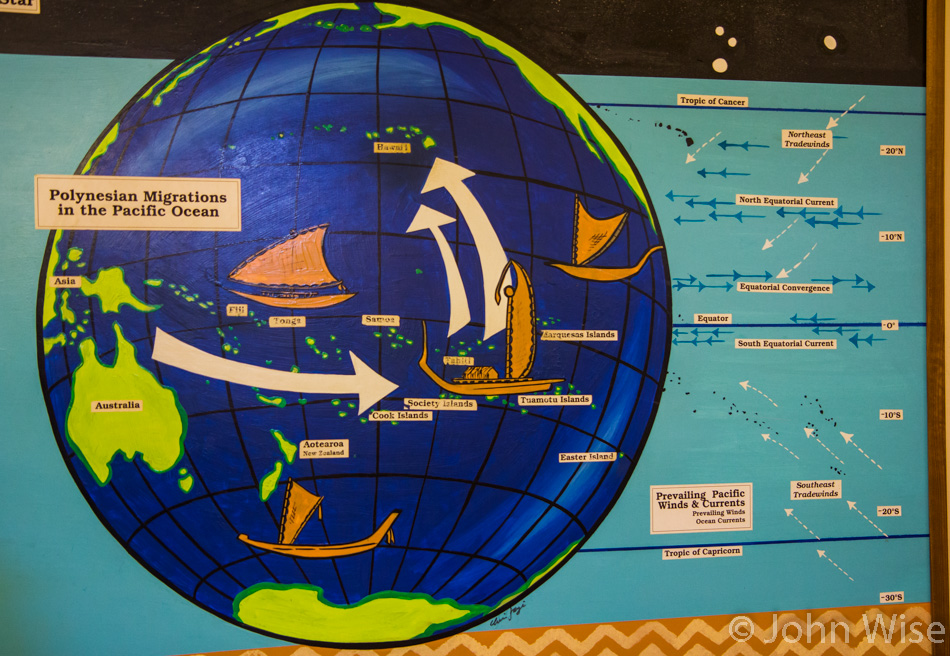
Looking for old town Lihue when yet another sign drew our attention, this time to the Kauai Museum. It’s a small affair that charges $10 for entry, but the two-story building next door houses part of the exhibit, so the cost feels reasonable and we decide to go for it. This place has held on for 53 years now and is starting to show its age. I should point out that our ticket is good for a week.
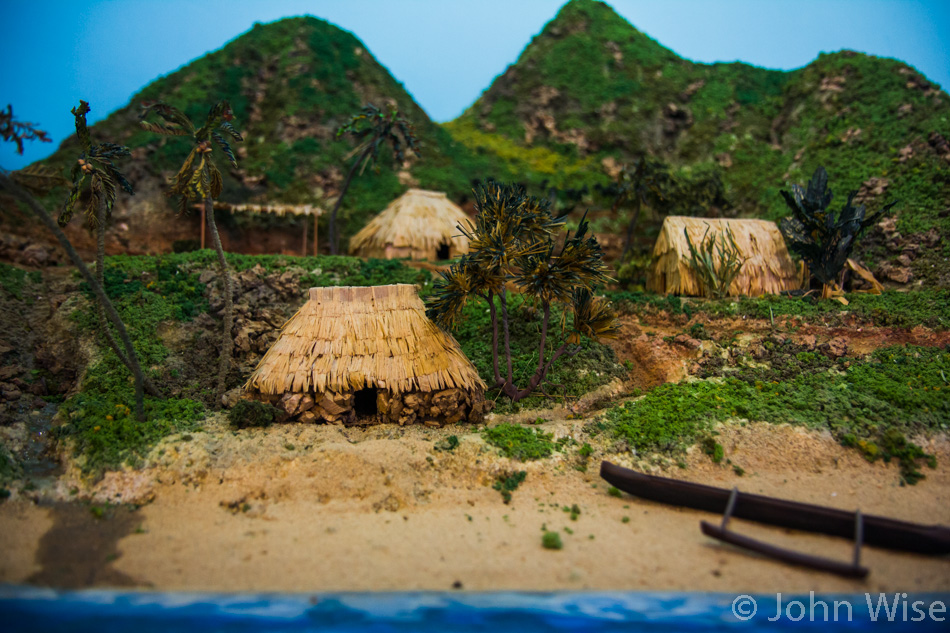
Having visited the Bishop Museum in Honolulu and Waimea Valley earlier in the trip, this scene portrays what we see in our imagination now as to what Hawaii might have looked like back when Captain Cook landed around the corner. There are a few gaps of information and history that are filled in with this visit, but nothing really illuminating.
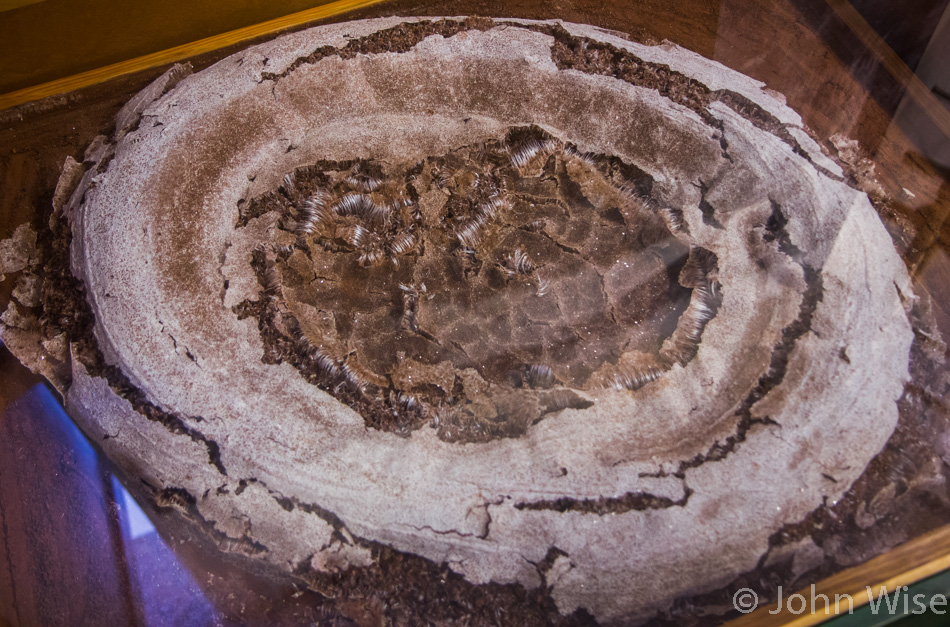
Great, I didn’t take a single note about what this was, but I believe it’s a crust of salt found near the salt ponds where saltwater would be evaporated for the collection of this all-important mineral.

One of the staff, upon hearing of our interest in the music of Queen Lili`uokalani (she wrote Aloha Oe), brought us over to Paul Isenberg’s family piano to sit down and play it. Who is Paul Isenberg? He’s the guy who moved from Germany to Hawaii to develop the sugar cane industry for the Kingdom of Hawaii. In 1918, during World War I, the operation was seized by the United States and sold to a consortium of Hawaiian businessmen. They renamed H. Hackfeld and Company to American Factors, which was shortened in the 1930s to Amfac. That company’s non-Hawaiian assets were bought by a Chicago realty company in 1988 that later renamed itself Xanterra Parks and Resorts and is the company that Caroline and I have used countless times to book stays from the Grand Canyon to Yellowstone. The piano is over 100 years old and was made in Leipzig, Germany.
Our intention was to head north to Kapaa, but a traffic jam turned us around, so we stopped at the “famous” Mark’s Place for dinner. One big MEH was our response to this allegedly popular joint. At 6:00, we dipped into a theater to watch the newly released The Hobbit, which elicited another big MEH.
Ended the day after a lackluster late afternoon with a shower under the banana leaves using our wonderful outdoor shower. We split a slice of haupia and purple yam pie we’d been saving from the Koloa Fish Market and sat down to write and listen to the rain. The windows are open and will remain so for the duration of our stay. The breeze is cool, and around 11:00 p.m., we start to consider getting some sleep.